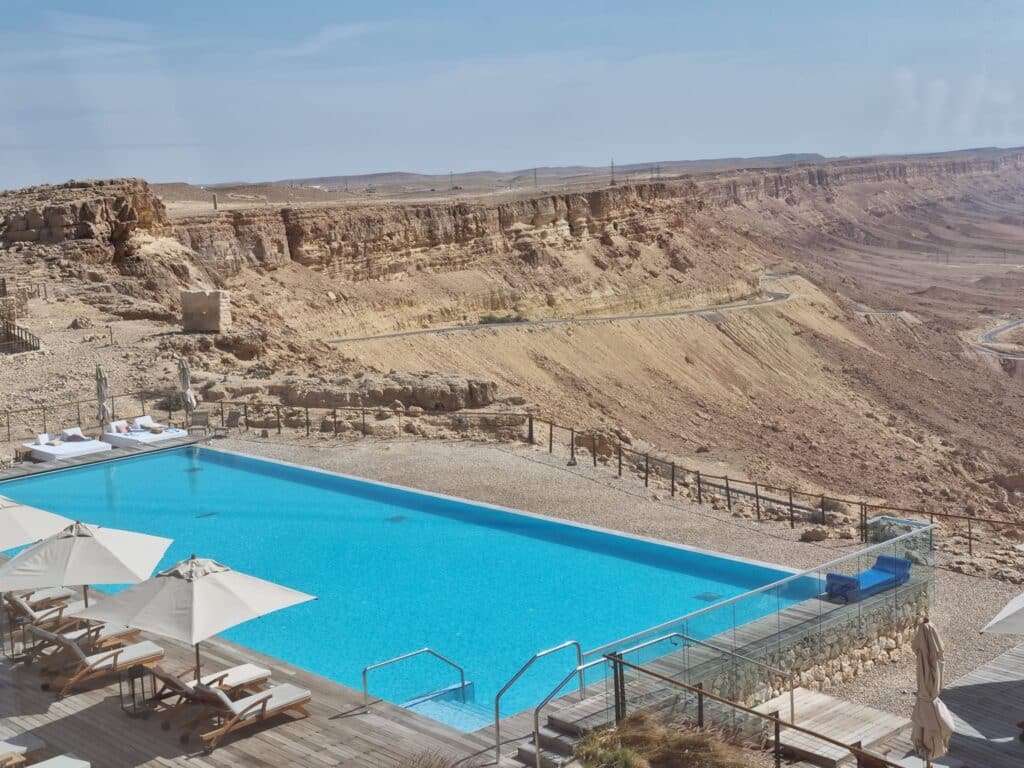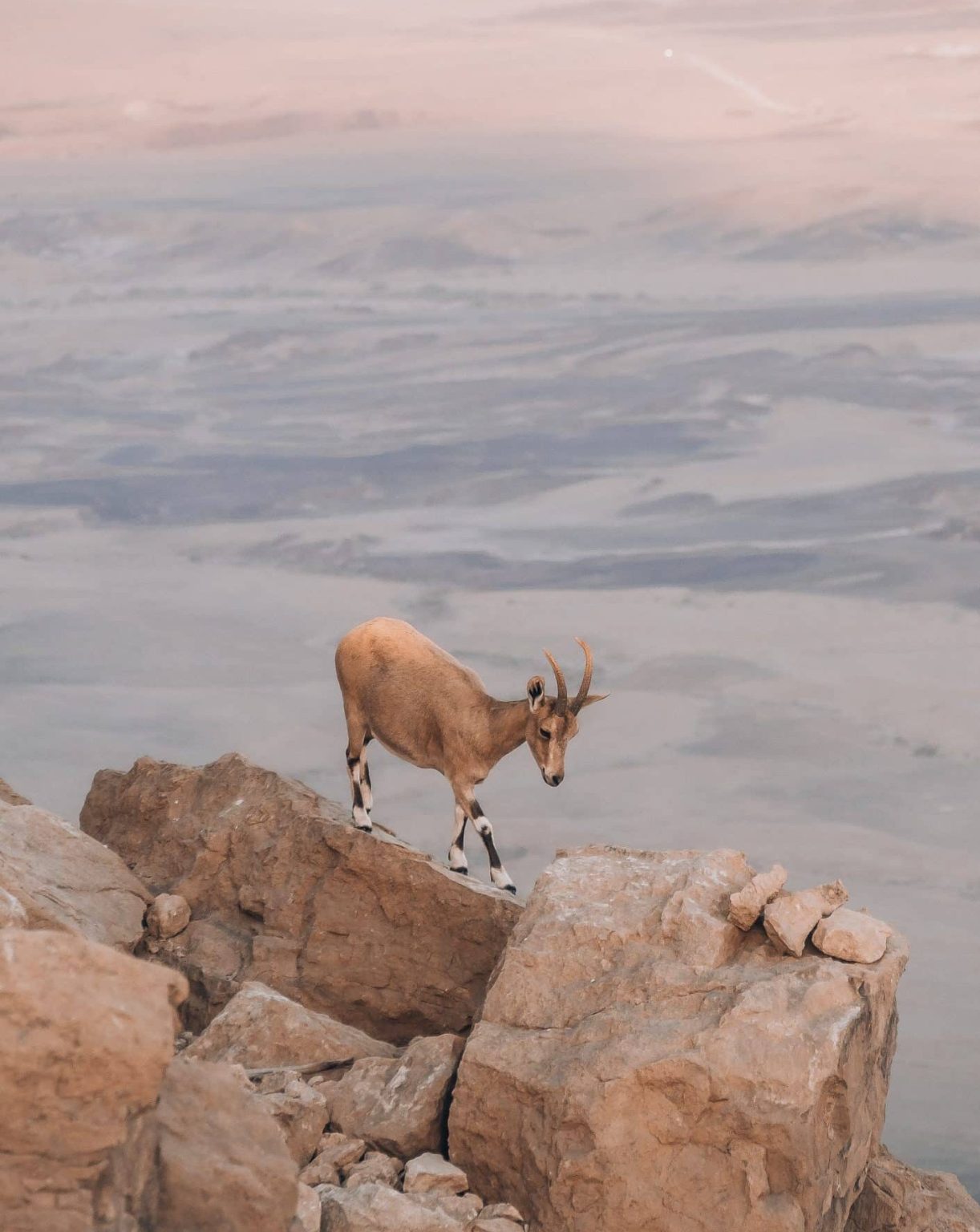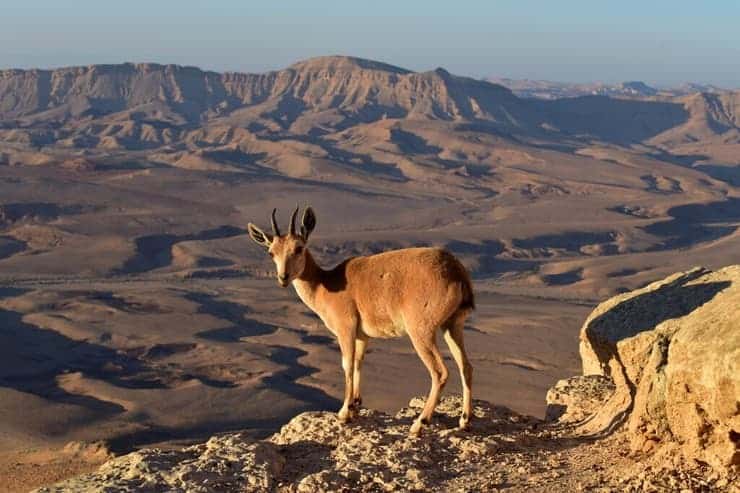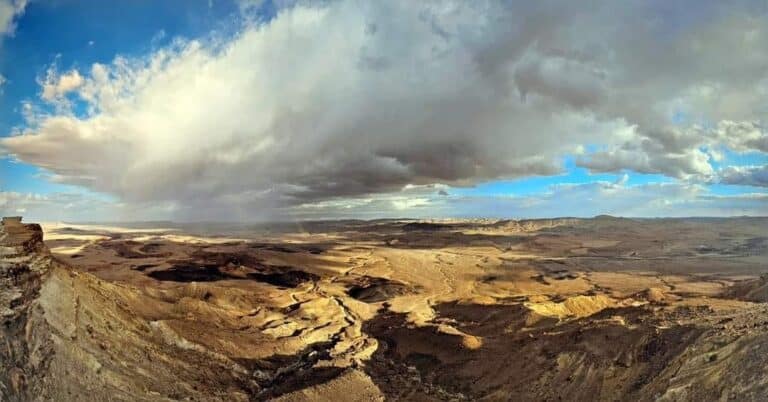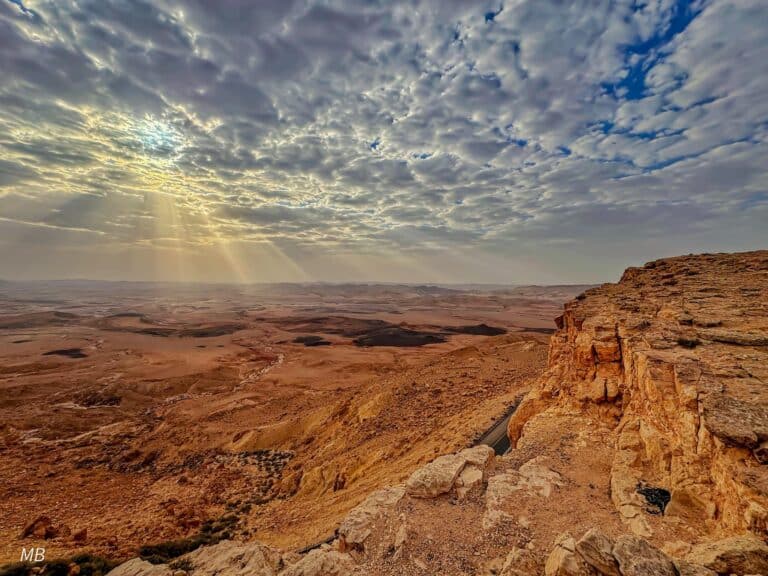The Israeli desert is undoubtedly one of the most beautiful and unique parts of the country. The peacefulness, the colors, and the amazing views create an unforgettable experience for every visitor to this region. Among the various sites and destinations in the desert, here we will tell you about one of our personal favorites, and the one site we tend to keep on coming back to time and time again: The Ramon Crater, which combines all of the qualities of the desert in one must-visit place.
How was Ramon Crater formed?
Ramon Crater, alongside the Big Crater, and the Small Crater – is a unique phenomenon that doesn’t exist anywhere else in the entire world. That is because they were formed in a different way than any other craters in the world. As the biggest of them all, with a length of 38 KM/23.6 miles, a width of 7 KM/4.35 miles, and a depth of 350 meters/1150 feet, it is the largest erosion cirque in the whole world.
The Ramon Crater was created Following the creation of a small crack in the ground. This kickstarted a fascinating process, with the end result being the formation of the crater.
First of all, some rainwater penetrated the cracks in the ground and widened them. As the limestone rock kept on dissolving slowly the crack widened in turn. But then, when some of the water finally reached beyond it, into the sandstone layer, it easily washed it away.
This created a situation in which the limestone layer still stands on top, but the sand underneath is no longer there. Then, when the limestone can no longer bear its weight, it collapses and enlarges the crack that has meanwhile become a small crater.
Thus, In many millions of years, this process continues and enlarges the crater even more, reaching the result that we see today, as the crater keeps on growing slowly.
3 tips when visiting the Ramon Crater
- The crater is especially beautiful at sunrise or sunset, so aim to visit during these golden hours.
- Be prepared to encounter wildlife, ibex, and possibly a fox or two, during the summer, be careful of snakes & scorpions.
- In winter, it gets quite cold in the evenings, so dress accordingly.
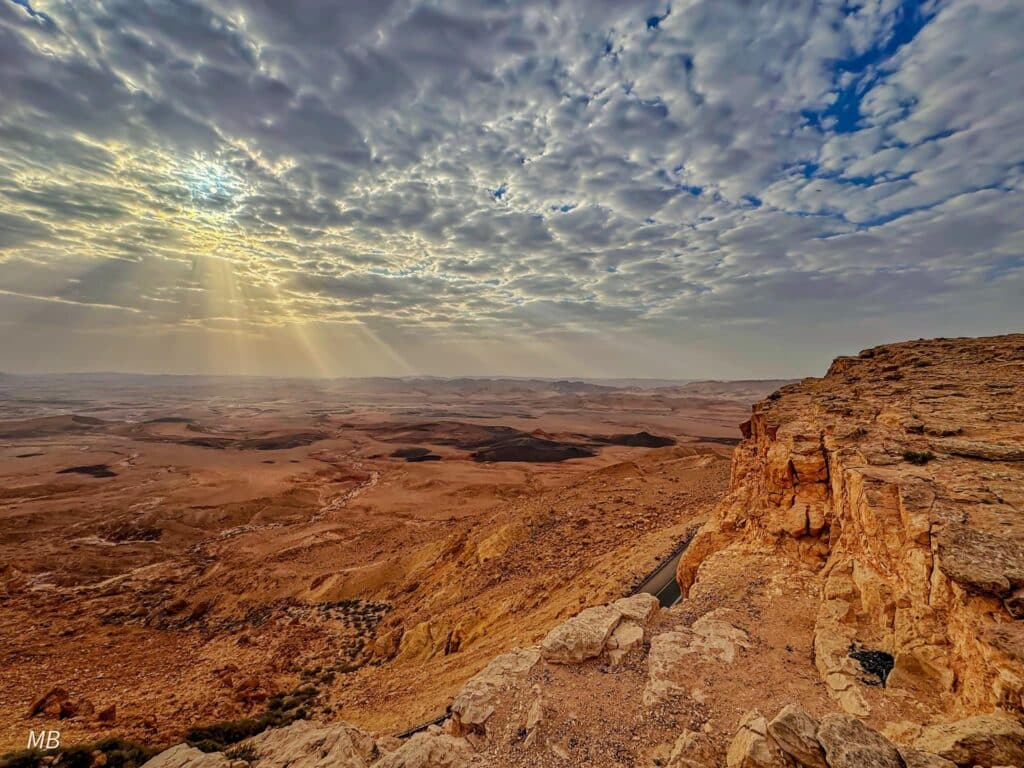
Best hiking trails in Ramon Crater
Cone hill (Giv’at Harut)
circular route | Route length: 2.5 km (about 2 hours)
To reach the trailhead, get to Be’erot campground, and then continue north on the dirt road marked in black, until turning right onto a dirt road marked in red. On this road, drive about 1 km to the fork, where you’ll choose the left road (black marking), which leads to the Saharonim parking lot. leave the car there and go to the track.
From the parking lot, a dirt road descends towards the short and impressive Ardon River. In addition, From the beginning of the trail, it is easy to see the black cone hill, which looks like a small volcano. Its color indicates the enormous heat of the magma that partially melted the surrounding sandstone rock in past times, and was part of the formation of the hill.
After walking about 500 meters, near a large acacia tree, we will come to a fork to the left of the stream, towards a blue-marked path. This path, which faces north towards Mount Ardon, will lead us to the northern side of the cone hill. The path rises moderately and continues to bring us closer to the hill.
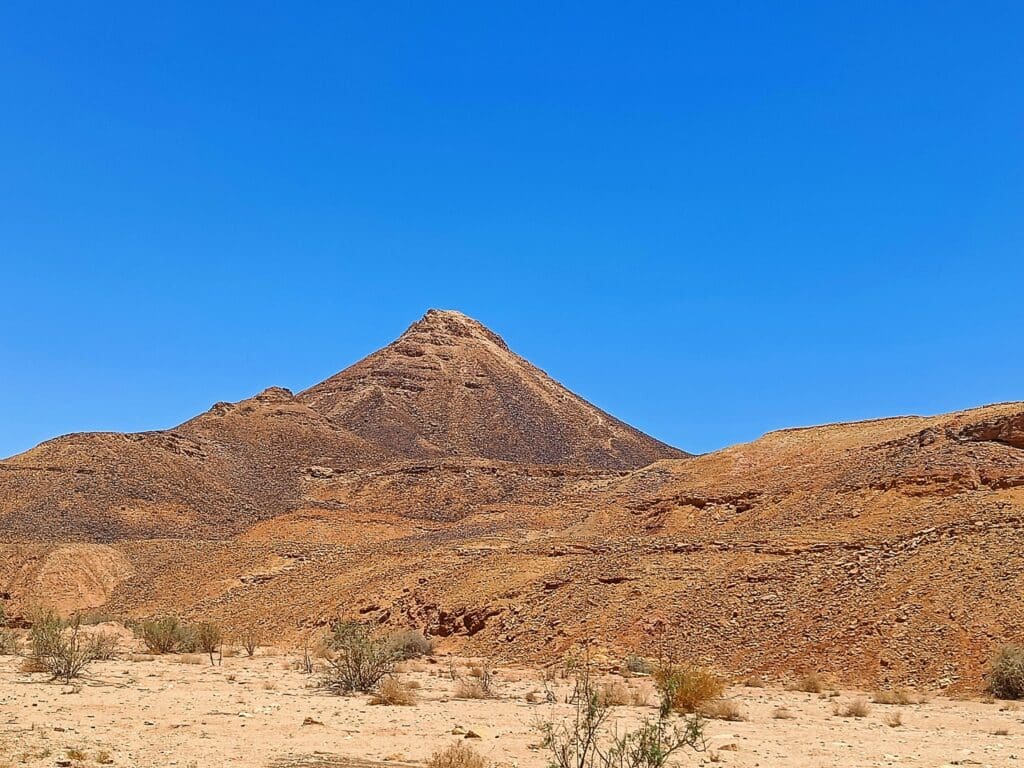
We will move uphill to the northern side of the hill, and then we will go up with the green marked path and climb to the top (note: the green marking does not appear on the map) – although from the bottom of the hill, the climb looks difficult, it is suitable for hikers of every level and only takes a few minutes. And no doubt, when you get to the top, you’ll feel like the view from it is worth every second of climbing.
At the top of the hill, a spectacular panoramic view of the area awaits you from which you can see the enormous dimensions of the crater. From here you will see Ramat Saharonim in the south, the Ardon Valley in the northeast, the Machmel Valley in the north, and the Ramon crater in the east. Mount Ardon, visible from the north, is what geologists call an inverted relief – today it is indeed a prominent mountain, but once it was actually a valley between two higher mountains. Those mountains were eroded and washed away over time by rain and weathering until they finally became two valleys: the Machmal Valley to the left of Mount Ardon and the Ardon Valley to the right.
From the lookout, we will return the way we came back to the bottom of the hill with the green route. After the steep descent, we will continue with the red trail for about 700 meters, until we connect to Ardon River again at the black marker. Here we will turn right onto the black path back towards the car, and on the way we will find another acacia tree under which we can rest for a bit.
About 400 meters from the turn to the black trail we will reach an unusual thicket of vegetation – if you look between the reeds there is a good chance you will see some water here – this is Ein Ardon, a small but very significant spring for the desert animals. This is an excellent opportunity to observe the footprints in the place and try to guess which animal visited the spring recently.
From here we will continue a short distance on the black path towards the parking lot where we left the car.
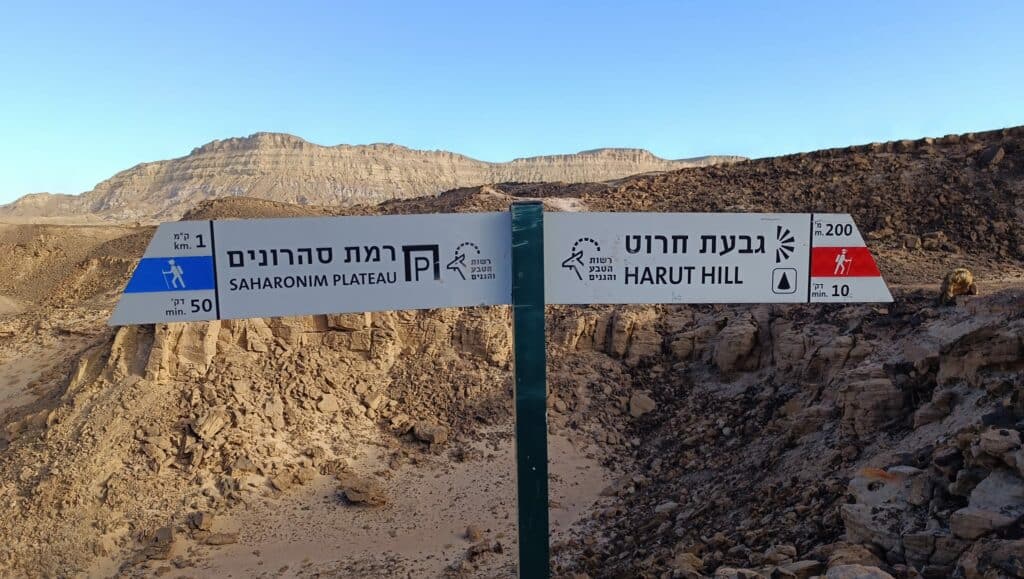
Khan Saharonim and Parsat Nekarot
circular route | Route length: 5 km (about 3 hours of walking)
The trailhead of this route is at Khan Saharonim. It is a spot of historic significance, as from The old citadel you can see there was one of the places used as an overnight stop for the traders and camels who carried their wares along the Incense trade route during the period of the Nabatean rule in Israel.
The Incense trade route was a well-known desert route, where spices and perfumes were transported from Petra to Gaza. Along this road, the Nabateans established designated places for overnight camping, which were usually located near a water source. The square citadel, which measures 42×42 meters, teaches us a lot about the Nabateans and their lifestyles.
After the short tour of the citadel, we will start walking east on the trail marked with a red marker. The road goes along the palm trees in Ramat Saharonim, and while walking down we’ll get rewarded with impressive views towards the southern side of the crater.
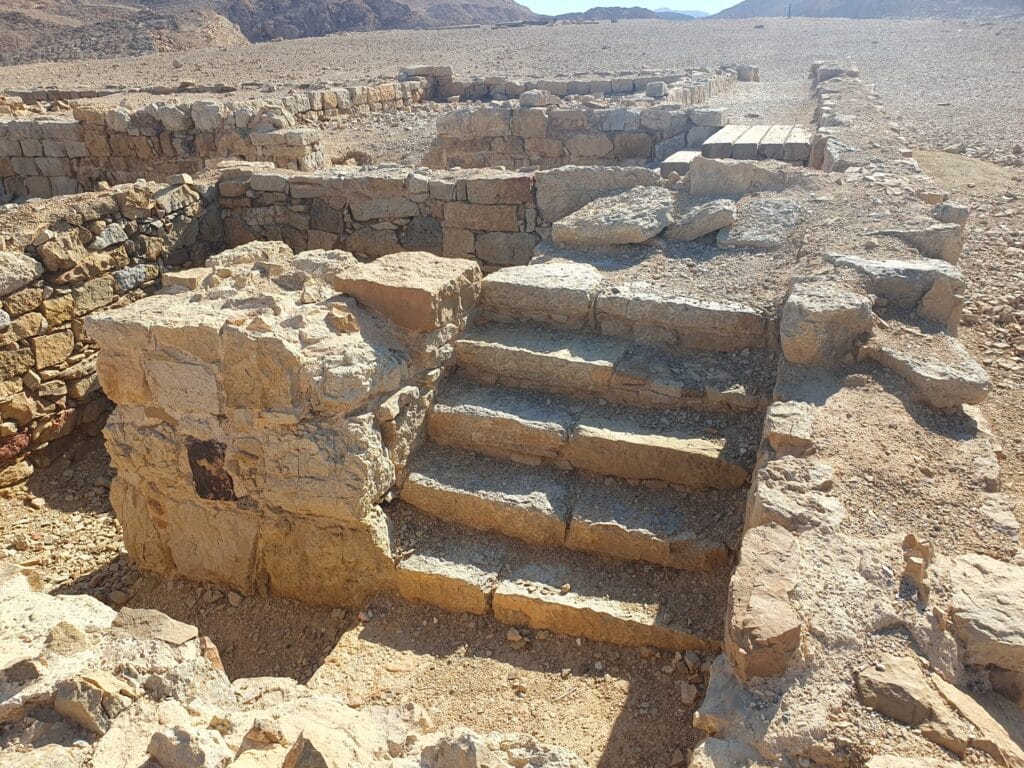
After walking along the wide part of the stream, you will reach the beginning of Parsat Nekarot – a part of the Nekarot River, which looks like a horseshoe on the map. It is about 3 km long, and in this area, the stream is relatively narrow and passes through an impressive gorge.
While walking we can notice the rich desert vegetation of the area. Since water from the entire area is concentrated in the stream, it is easy for plants that go through long dry periods to grow in the streambed, where the chance to benefit from the rainwater is greater. Among other things, we can find here several kinds of acacia trees, Lycium shawii, Zilla spinosa, and more.
If you walk quietly and look carefully around, there’s also a good chance you’ll come across a family of goats looking for tasty plants for a meal.
After walking about 2.2 km, we will see on our left the descent from Mount Saharonim, which is marked with a black marker. We will continue on the blue path we are walking on, which continues along the stream for about 1 km to Saharonim Spring, Khan Saharonim, and the parking lot.
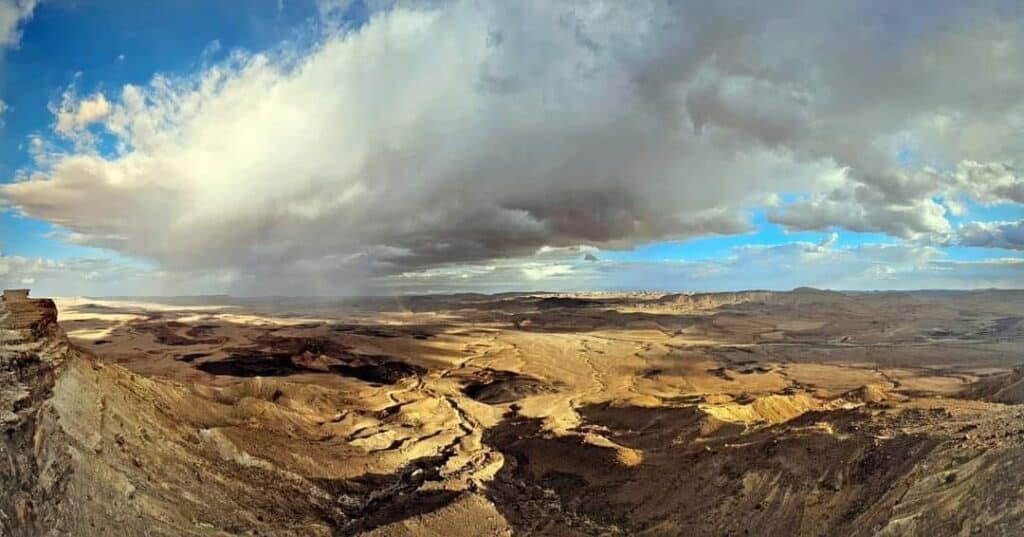
Ramon Crater’s most beautiful viewpoints
Mitzpe Ramon promenade
Starting from the edge of the town of Mitzpe Ramon, this short promenade that follows the rim of the Ramon crater provides visitors with stunning views of the whole area. From the entrance, You can continue walking along the boardwalk up to Mount Gamal, for about 800 m. You can also cross Route 40 on the pedestrian overpass, pass by Beresheet Hotel and visit the Sound Promenade, where there are sculptures simulating musical instruments.
If you wanna experience it to its fullest, it’s best to arrive here around sunset or sunrise and experience the golden hours of the desert.
Haminsara
Haminsara (meaning The sawmill) is a hill in the heart of the Ramon crater, and one of the most impressive spots of the area. The hill is covered with sandstone columns with straight sides, that look like wooden boards sawn in a carpentry shop, which serve as the inspiration for the hill’s name. You can explore the area by walking on the 250-meter-long wooden path, which will take you around the sawmill stones. It ends with a short and highly recommended path to the top of the hill, from which you can see great views of the crater from every angle.
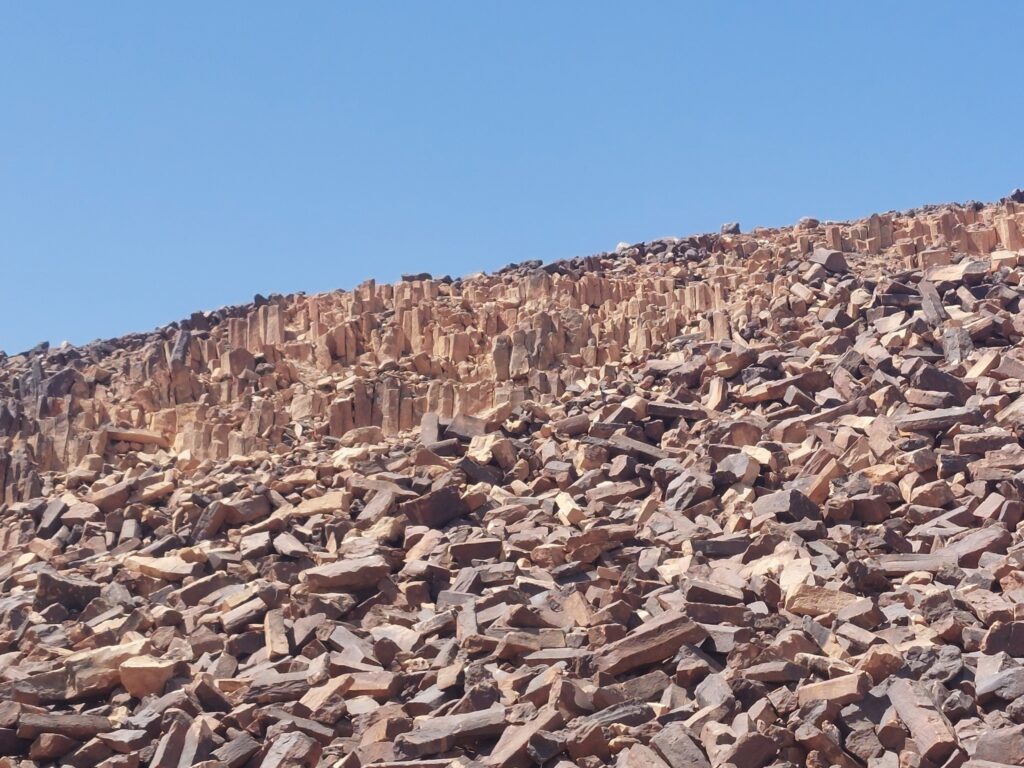
Recommended Hotels in the Area
One of the most exquisite hotels in Israel. At Beresheet the service, and attentive attitude of the hotel staff enhance your stay consistently. We stayed in a room with a private pool facing the crater. The large, luxurious room had a warm pool available day and night, allowing for a dip at any moment. Waking up to see the sunrise while swimming in the pool is the most luxurious experience imaginable. We love the fact that reindeer roam around the hotel and holiday units, making them feel like an integral part of the environment throughout the day.
The elegant dining room features a buffet and main dishes served from a menu, with no limit on the number of dishes. Each dish is presented with high standards, amazing taste, and aesthetics.
